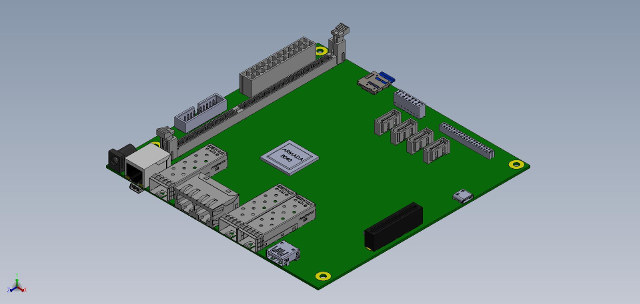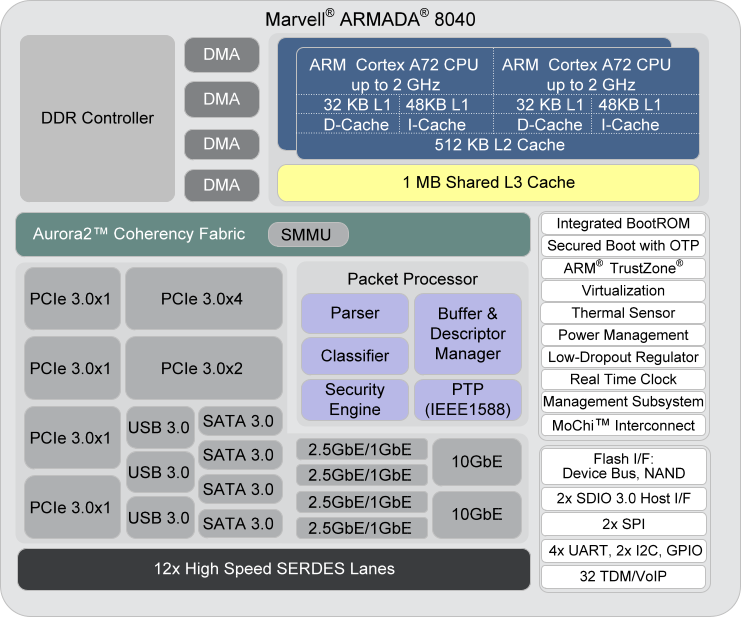Developers interested in ARMv8 server or networking boards are starting to have more and more affordable choices. After AMD Opteron A1100 series based LeMaker Cello board, and Softiron Overdrive 1000 server, SolidRun is now working on ARMADA 8040 networking community board powered by Marvell ARMA8040 quad core Cortex A72 network processor.

ARMADA 8040 networking board (mrvl8040) preliminary specifications:
- SoC – ARMADA 8040 (88F8040) quad core Cortex A72 processor @ up to 2.0 GHz with MoChi architecture
- System Memory – 4GB DDR4 DIMM by default
- Storage – 4x SATA 3.0 port + micro SD slot
- Connectivity – 1x Gigabit RJ45 port, 1x SFP SGMII @ 2.5Gbps, dual 10Gbps copper with auto switchover to dual SFP+
- Expansion – 1x PCIe-x4 3.0 slot, Linaro 96Boards expansion slot exposing GPIO, UART, I2C and SPI, Marvell TDM module header
- USB – 1x USB 3.0 port, 2x micro USB ports
- Debugging – Console port (UART) over microUSB connector; 20-pin Connector for CPU JTAG debugger; OpenOCD debugger support over FTDI device
- Power Supply – 12V DC via power jack or ATX power supply
- Dimensions – Mini-ITX form factor (170 mm x 170 mm)
The complete hardware specifications have not been released yet, so many of the features above are derived from the 3D renders of the board. The board targets OpenDataPlane (ODP), OpenFastPath (OFP) and ARM network functions virtualization (NFV) ecosystem communities. The software will include a fully open source ODP implementation with U-Boot 2015.x, mainline U-Boot, UEFI EDK2, Linux LTS kernel 4.4.x, mainline Linux, Yocto 2.1 and netmap.

ARMADA 8040 community networking board is scheduled to ship early September (early access) or mid October, but SolidRun is already taking pre-orders with a $50 discount bringing the price down to $299 with 4GB RAM, but you may want to add the power supply for $10 more. Marvell also plans to launch 8-,16- and 32-core versions of ARMADA 8040 SoC in in Q1 2017, but it’s unknown whether they’ll make it in to community boards.

Jean-Luc started CNX Software in 2010 as a part-time endeavor, before quitting his job as a software engineering manager, and starting to write daily news, and reviews full time later in 2011.
Support CNX Software! Donate via cryptocurrencies, become a Patron on Patreon, or purchase goods on Amazon or Aliexpress




